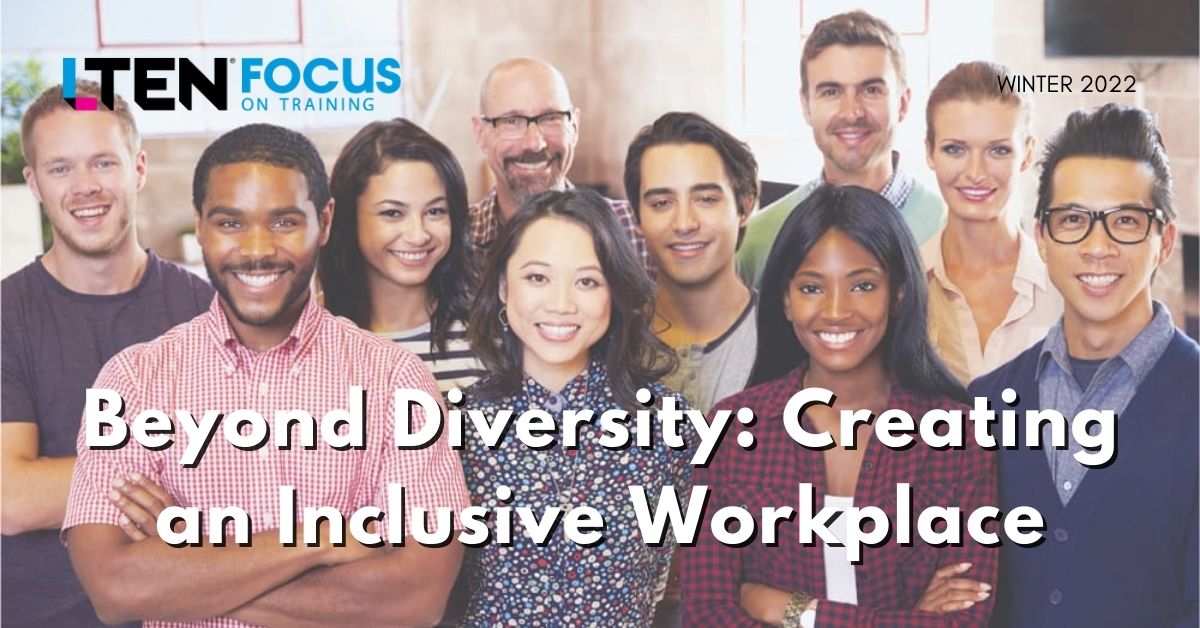
Beyond Diversity: Creating an Inclusive Workplace
Feature Story – By Tarrow Henderson, PharmD
Feeling included opens doors to free expression, innovation and performance.
Diversity is a hot topic right now and rightfully so. What took so long? Could it be the recent social injustices coupled with COVID stay-at-home orders that have forced us all to stop and take notice? Or the fact that investors are holding companies accountable to the level of diversity they espouse? Or maybe it’s just the right thing to do.
Whatever the reason, here we are, so let’s dig in.
Creating Inclusion
Diversity is merely a variety of different backgrounds, genders, etc., but we can’t stop there. Diversity is insignificant without inclusion.
An inclusive work environment for excluded or marginalized individuals must consist of three things: Fair and respectful treatment, equity in access to opportunities and resources and the ability to contribute fully to the organization’s success.
 We all want to be included! This feeling opens the door to free expression of thoughts and ideas. It drives positive performance and creates space for collaboration, innovation and engagement. Including diverse talent can ultimately increase creativity, productivity and profitability, and reduces friction.
We all want to be included! This feeling opens the door to free expression of thoughts and ideas. It drives positive performance and creates space for collaboration, innovation and engagement. Including diverse talent can ultimately increase creativity, productivity and profitability, and reduces friction.
However, there are several ways inclusion can be stifled: microaggressions, cognitive dissonance and thought-terminating clichés. Let’s explore these three concepts.
Microaggression
A microaggression is an indirect, subtle or unintentional discrimination in the form of a statement, action or incident against members of a marginalized group. The difference between microaggressions and overt discrimination (i.e., macroaggressions) is that people who commit microaggressions are most likely not aware of them.
We have all used or been subjected to them. For instance, “We are all one race, the human race,” “I believe the most qualified person should get the job” or “everyone can succeed in society if they work hard enough.”
As harmless as it may sound, they possess negative and demeaning connotations.
“We are all one race, the human race,” suggests that the experience of one race is no different from the experience of people of other races. “I believe the most qualified person should get the job” and “everyone can succeed in society if they work hard enough” feed the myth of meritocracy, as if race or gender doesn’t play a role in life successes; or people of color are lazy or incompetent.
Microaggressions are frequent. Despite the harmful implications, they are often dismissed and not addressed. When they are addressed, the offended can be misinterpreted as overreacting.
The good news is there are some effective strategies to address microaggressions in a non-threatening manner. Start with mentioning the offense to the offender, “that’s an interesting statement, please explain.” Be an active bystander and interrupt the offensive situation by asking questions, “why do you ask?” Or “why do you seem surprised?” The goal is to make the offender aware of the incident and then educate on the impact.
Cognitive Dissonance
Microaggressive behavior can expose cognitive dissonance. It is best described by Frantz Fanon as a feeling that is extremely uncomfortable when presented with evidence that works against a strong core belief, and therefore the new evidence cannot be accepted.
Since it is so important to protect the core belief, one will rationalize, ignore and even deny anything that doesn’t fit in with the core belief. For instance, a smoker believes it is unhealthy to smoke but continues to smoke regularly, or an animal rights activist eats meat. Both cause feelings of guilt and shame. It’s best to acknowledge the discomfort and then examine why the feeling exists.
Thought-Terminating Clichés
Try avoiding common rationalizations to excuse conflict, known as thought-terminating clichés. They are thought and dialogue stoppers; a form of loaded language, commonly used to suppress cognitive dissonance. For instance, “let’s agree to disagree,” “it is what it is,” or “I have the right to my own opinion.”
In proper context, all these phrases are true, but when used as weapons to protect a belief system, they can have negative impacts. Thought-terminating clichés suppress differing thoughts and opinions and can damage relationships. They can be condescending, demeaning and have a negative influence on productivity and profitability.
What You Can Do
Find yourself uttering a microaggression? First reflect on your intention. What assumptions did you make? Then consider the impact of your comment or gesture and be open to discussing your own attitude and implicit biases.
If on the receiving end, take a breath. Assume it is unintentional and either let it go or start the dialogue from a place of positivity.
If your beliefs or behaviors are confronted, ask yourself, how much satisfaction does it provide? How much pain or loss will I endure to change? Be ready, willing and prepared to do the work to make a positive change.
Educate yourself on the challenge you face to gain an understanding of opposing views. Keep an open mind and continue to dialogue with colleagues of diverse backgrounds. Change is not always easy or comfortable. It takes time, so be patient with yourself.
Don’t use or be silenced by bumper sticker logic. Instead ask “why” and support healthy debate. Be open to change, don’t jump to conclusions and grant your colleague the benefit of the doubt. Extend grace whenever possible.
Finally, be an ally.
Tarrow Henderson, PharmD, is senior manager, Amgen Global Learning and
Performance. Email Tarrow at tarrowh@amgen.com.









